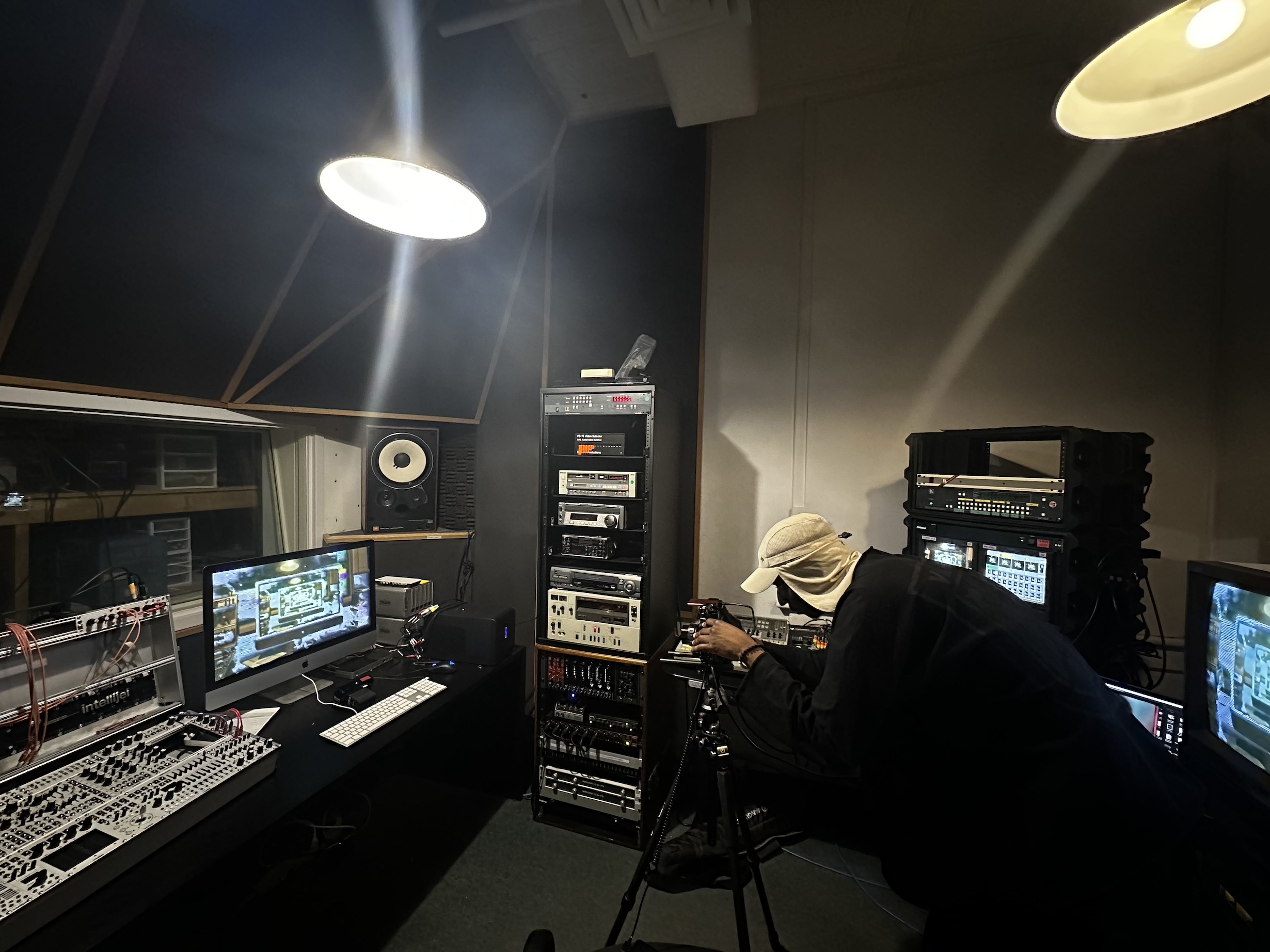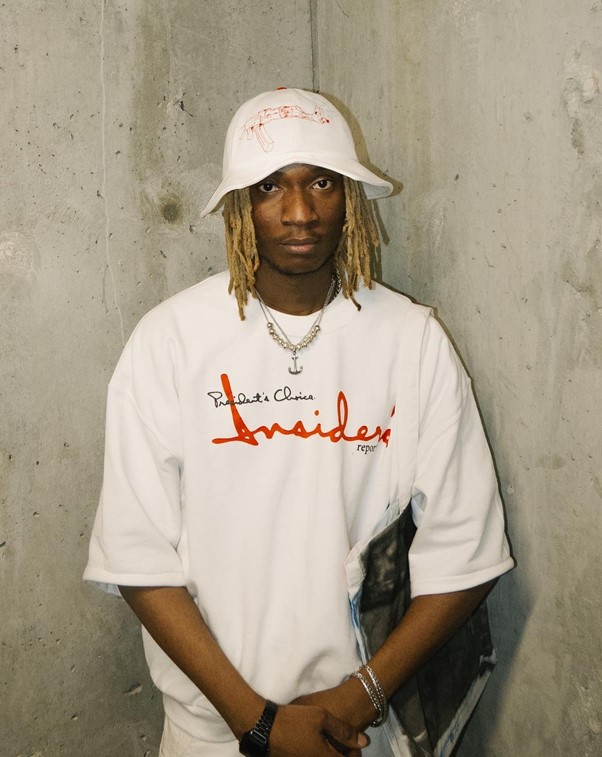
<\AV_+_AI/> - Aderemilekun Olusoga
Part of the 2024 Scott Leroux Fund for Media Arts Exploration
During his residency, he explored the creation of multimedia artworks, producing a series of artworks with analogue and digital elements in conversation, through analogue video mixing technologies and AI-powered image-image generation. Investigating facets innately particular to both systems and ultimately offering viewers a fresh perspective on media synthesis.

About the Artist
Aderemilekun Olusoga
Aderemilekun “Oluuji” Olusoga is a self-taught Nigerian visual artist currently living in Canada, where he earned his bachelor’s degree in Neuroscience from the University of Winnipeg in 2022. His innate skill and affinity for philosophy, religion and science cultivate an array of intricate thoughts he communicates most effectively through his visual art. Frequently employing visual themes of layering, duality and symmetry, with conceptual themes of existentialism, nostalgia and community.
SLFMAE Research
While in residence, he described his exploration of analog video systems as both nostalgic and eye-opening. Using vintage equipment like the FXE, MX-PRO and V4 video mixers, a video equalizer, and VHS tapes, he engaged deeply with the tactile and unpredictable nature of analog media.
In his experiments with video mixing and signal processing, he utilized the flexibility of the system to create intricate feedback loops, producing fascinating visual distortions and textures that highlighted the unique qualities of analog signal degradation and real-time manipulation.
Chroma keying allowed him to layer different analog footage, resulting in surreal and multi-dimensional visual compositions. He also explored time-based effects such as analog glitching and image degradation, adding a distinct character and depth to his works and capturing the essence of analog media.
Immersing himself in the archives of old footage, films, TV ads, and recordings was a profound experience for him. The historical context and nostalgic value embedded in these videos provided rich source material for reinterpretation and transformation through analog techniques. This archival exploration was crucial in understanding the evolution of visual media and its impact on contemporary artistic practice.
He successfully created multimedia artworks that blended analog and digital elements, offering viewers a fresh perspective on media synthesis. These works highlighted the potential of integrating vintage analog video methodologies with contemporary AI technologies, pushing the boundaries of visual storytelling and artistic expression.
One of his main explorations during the residency involved recreating classic Nigerian video advertisements using AI image-to-image synthesis and incorporating analog feedback with chroma and luma keying and an overlay image degradation/noise. This project resulted in a unique visual retelling of nostalgic moments with an unsettling undertone, reflecting on where the future is headed in terms of video creation and consumption. By juxtaposing the tactile, unpredictable nature of analog video with the precision AI technologies aim for, he created a series of multimedia artworks that explored themes of reconstruction, nostalgia, and technological evolution. He plans to expand on the underlying philosophies directing this work through future writings and presentations.
Through extensive experimentation and collaboration, he expanded his technical skills and artistic repertoire. Immersing himself in the intricacies of analog video systems and AI technologies deepened his understanding of these mediums, empowering him to continue exploring new creative possibilities beyond the residency.
By documenting his process and sharing insights through public engagement activities, such as social media posts and public presentations, he hopes to contribute to a broader discourse on the intersection of art, technology, and cultural heritage. He believes his reflections and experiences will foster dialogue within the artistic community and highlight the importance of embracing while still critiquing new systems and technologies in the pursuit of artistic excellence and innovation.
He found that working with analog equipment fostered a deep connection with the materiality of video art. The unpredictability and uniqueness of analog signal manipulation allowed for spontaneous and serendipitous creative outcomes, enriching his artistic process. However, he also faced challenges, such as unpredictable errors and limited experience with troubleshooting the technologies. The MX-PRO, in particular, was overwhelming with its numerous editing options, making one month feel insufficient to grasp some of the tools fully.
On the other hand, AI tools offered him unprecedented creative freedom and efficiency. The ability to generate complex visual content quickly and with minimal input was a significant advantage, enabling rapid experimentation and iteration. These tools expanded his creative horizons, allowing him to explore new aesthetic possibilities. However, AI tools sometimes lacked the intuitive, hands-on feel of analog systems. The reliance on pre-existing databases and algorithms introduced a level of predictability that contrasted with the serendipitous nature of analog media. Balancing the precision of AI with the organic qualities of analog media was an ongoing challenge but also a rewarding aspect of his project.
